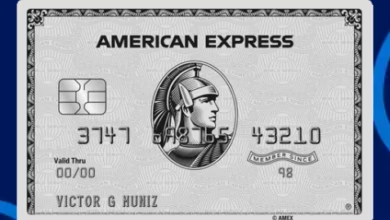
Have you ever wondered how much you can spend on your credit card? Or why some people have much higher spending power than others? The answer lies in something called your “credit limit.” For many, this concept can seem a bit mysterious, but understanding it is key to managing your finances effectively and building a strong financial future.
What is a Credit Limit?

At its core, your credit limit is the maximum amount of money you’re allowed to borrow on a credit card or other line of credit. Think of it like a spending cap set by the lender (usually a bank or credit card company). When you use your credit card, you’re borrowing money up to this pre-approved limit. Each time you make a purchase, that amount is deducted from your available credit. When you pay your bill, that amount becomes available again.
It’s important to remember that your credit limit isn’t necessarily how much money you should spend. It’s simply the maximum amount the lender is willing to let you borrow at any given time. Responsible credit use involves staying well below your credit limit.
How Do Lenders Determine Your Credit Limit?
So, how do lenders decide on that specific number for you? It’s not a random guess! Lenders use a variety of factors to assess your creditworthiness and determine how much risk they’re willing to take. They want to ensure you can repay the money you borrow. Here are the primary factors they consider:
Credit Score: The Cornerstone of Your Credit Limit
Your credit score is arguably the most influential factor. This three-digit number, generated by credit bureaus (like Experian, Equifax, and TransUnion in the US), is a snapshot of your financial reliability. It’s calculated based on your past borrowing and repayment behavior. A higher credit score signals to lenders that you are a responsible borrower with a strong history of paying your debts on time, which often translates to a higher credit limit. Conversely, a lower score may result in a smaller initial limit or even a denial of credit.
Income and Employment Stability: Proving Your Repayment Capacity

Lenders need to know you have a steady income to repay your debts. They will often ask for information about your salary, employment history, and even your job title. A higher, more stable income demonstrates a greater ability to handle larger credit limits. Self-employed individuals or those with fluctuating incomes might face more scrutiny or receive lower initial limits until they establish a consistent repayment track record.
Debt-to-Income Ratio: Your Current Financial Obligations
Your debt-to-income (DTI) ratio is a crucial metric. It compares the amount of debt you have (like student loans, car payments, or other credit card balances) to your gross monthly income. A high DTI ratio indicates that a significant portion of your income is already allocated to debt payments, which might make lenders hesitant to extend a large credit limit, as it could strain your finances further. Lenders prefer to see a lower DTI, suggesting you have more disposable income to manage new credit responsibilities.
Credit History Length: Experience Matters
The longer your credit history, the better. Lenders like to see a long track record of responsible credit use. If you’ve been managing credit cards and loans for many years without major issues, it builds trust. For individuals new to credit, initial limits might be lower as lenders have less data to assess their repayment behavior. This is why starting with a secured credit card or a small credit limit is a common first step for building credit.
Payment History: Your Reliability Scorecard
Have you consistently paid your bills on time? Your payment history is a direct indicator of your reliability. Lenders meticulously review whether you’ve made payments on past and current debts promptly. A history of missed or late payments is a major red flag and will almost certainly lead to a lower credit limit or even a denial. Consistent on-time payments, however, paint a picture of a trustworthy borrower.
Other Factors: Broader Financial Picture

While the above are the main drivers, lenders may also consider other aspects such as:
- Existing Credit Accounts: The number and types of credit accounts you already have.
- Credit Utilization Rate: How much of your available credit you’re currently using. A low utilization rate (keeping balances well below your limit) is positive.
- Recent Credit Inquiries: Too many recent applications for new credit can signal financial distress and may temporarily lower your credit score and limit potential.
Boosting Your Credit Limit: Strategies for Growth
Once you understand how credit limits are set, you can take steps to potentially increase yours over time. This generally involves demonstrating responsible financial behavior:
- Pay Your Bills on Time, Every Time: This is paramount. Consistent on-time payments build a strong positive payment history.
- Keep Your Credit Utilization Low: Aim to use no more than 30% of your available credit on any given card. Lower is better!
- Monitor Your Credit Score: Regularly check your credit score and report for errors.
- Increase Your Income (if possible): A higher income naturally improves your repayment capacity.
- Build a Long and Diverse Credit History: Over time, responsibly managing different types of credit (like a credit card and a small loan) can be beneficial.
- Request an Increase: After a period of responsible use (typically 6-12 months), you can proactively request a credit limit increase from your lender. They will likely review your updated financial situation.
The Importance of a Credit Limit: More Than Just Spending Power

Your credit limit is more than just a number; it’s a reflection of your financial responsibility and trust from lenders. Understanding how it’s determined empowers you to make informed financial decisions, build a strong credit profile, and ultimately achieve your financial goals. Use your credit wisely, stay within your means, and watch your financial potential grow!





